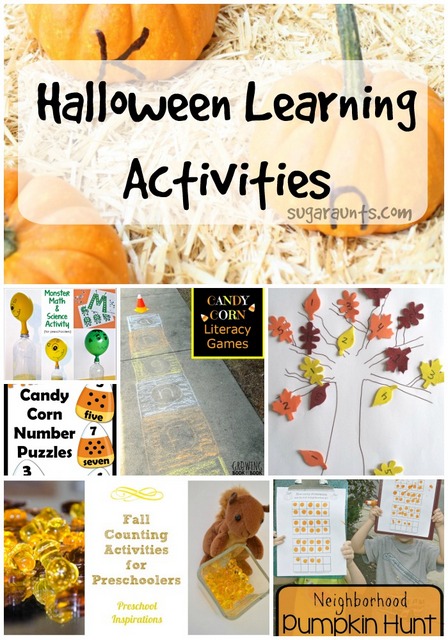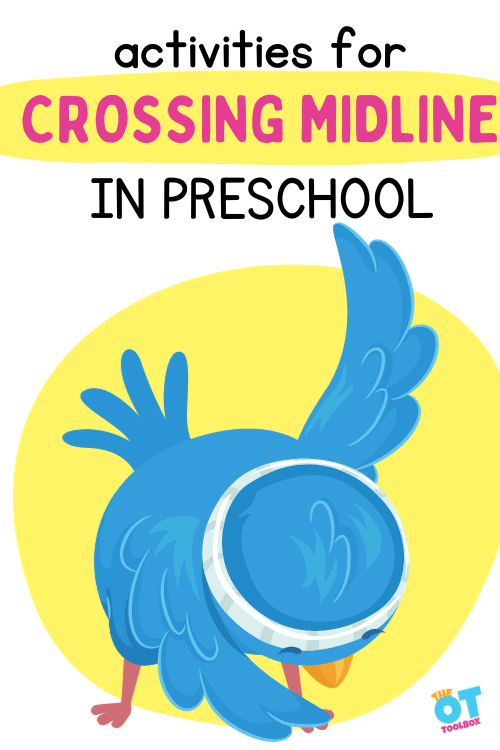What if you could take the excitement and fun of Halloween and combine it with writing numbers, counting, and all things math? These Halloween math activities are a great way to use fine motor math with all that this time of year offers. We’ve shared Halloween occupational therapy activities before, but these ideas are designed to boost math through play! Spooky learning ideas, ghost math, pumpkin adding…there is a lot of fun to be had! What a fun way to learn and play!
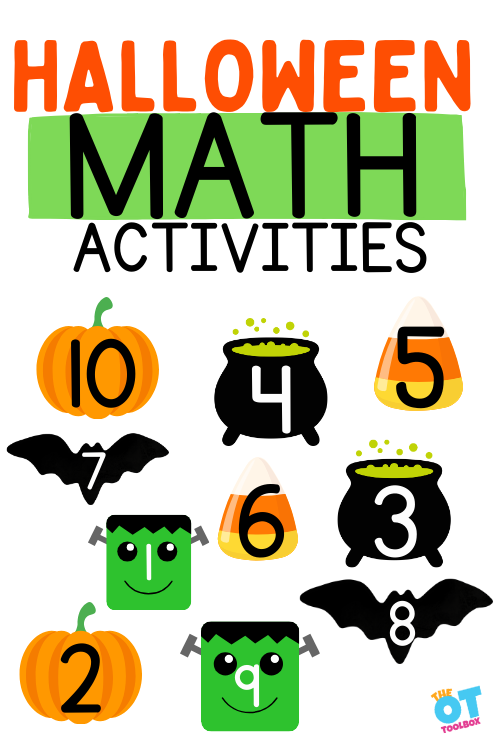
Halloween math activities are a fun way to build math skills leading up to Halloween!
Halloween Math Activities
We’ve included Halloween Math Activities to target a variety of skills:
- fine motor math
- pumpkin math
- ghost counting
- spider addition
- scarecrow place value activity
However, we wanted to share a few other ideas that support math skills…
Combine these activities with a group therapy session, push in therapy, or even a Classroom Halloween party for building skills AND learning this month.
Gather a few items for Halloween math…
- pumpkin seeds
- Halloween mini erasers
- mini plastic pumpkins or cauldrons
- tongs, tweezers, etc.
- candy corn
- spider rings
- bat stickers
- glow in the dark stars
- candy wrappers
- monster eyes (googly eyes)
Each of these items can be used to count, do math, use in number lines, fraction activities, and much more.
Fine Motor Halloween Math
There is much research telling us that fine motor skills predict math skills in kids, so why not add the fun of Halloween with fine motor activities? Studies show that motor skills are significantly related to their mathematical ability.
Here are Halloween fine motor activities that double as math activities for counting, sorting, patterns, and more.
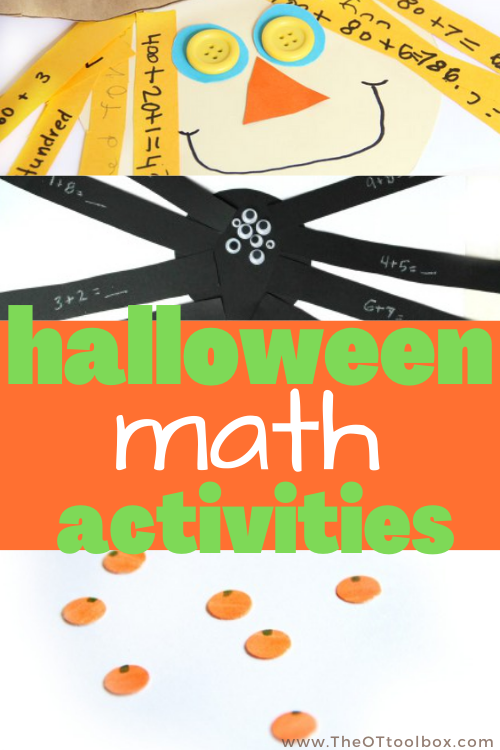
Pumpkin Math
In this fine motor pumpkin sticker activity, we made our own pumpkin stickers, and used them in a Halloween literacy activity. But, they are perfect pumpkins for math skills too. Use the small pumpkins to count, add, work on place value, and to sort into arrays for multiplication and division.
This is a great Halloween math activity for pushing into the classroom or to use in home occupational therapy via OT teletherapy sessions. Kids will need only three materials:
- Orange construction paper
- Hole puncher
- Pencil or marker
Ask kids to use the hole punch to punch orange circles onto their desk surface. They can use their pencil or marker to add a small stem to each pumpkin. Then, it’s time to sort, count, add, subtract, and arrange into piles of ten.
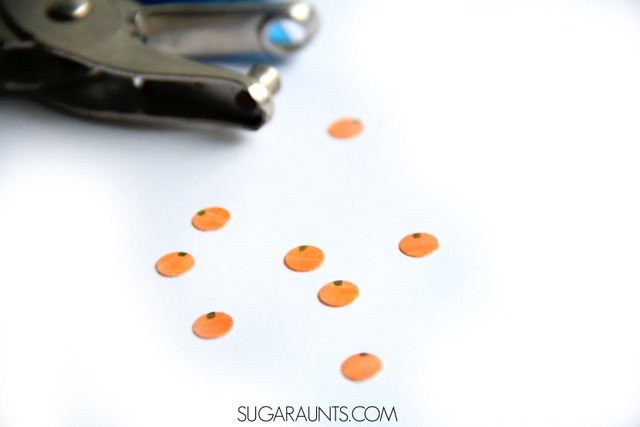
Ghost Counting
This ghost craft is one of my favorite Halloween crafts here on the site. Save up a handful of bread ties and use them for math activities, sorting, counting, and adding/subtracting. The cute spooky manipulative is fun and not scary!
You’ll need just one material for this, but you can add them to any sensory tray like we did, using dry black beans:
- White bread ties
Slide them onto pipe cleaners to count and sort by groups for counting and multiplying.
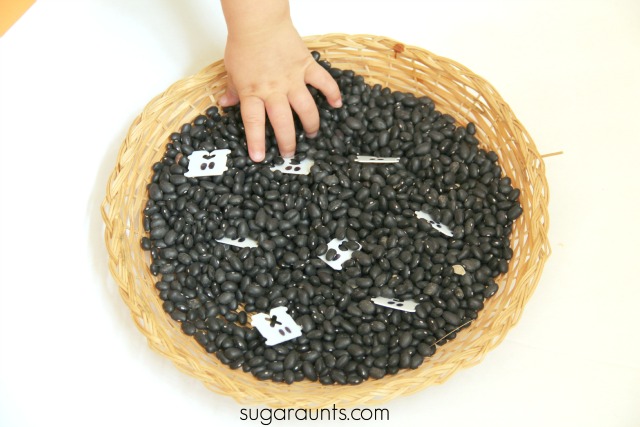
Spider Addition
Use this spider math craft to work on adding, subtracting, and fact families. You’ll need just a couple of materials:
- Black construction paper
- Scissors
- White chalk, crayon, or colored pencil
Make the spider by following the directions in the spider math craft tutorial and then work on the math skills that your child needs to address. We used the creepy crawly craft to work on near doubles, but you could use this for any math facts!
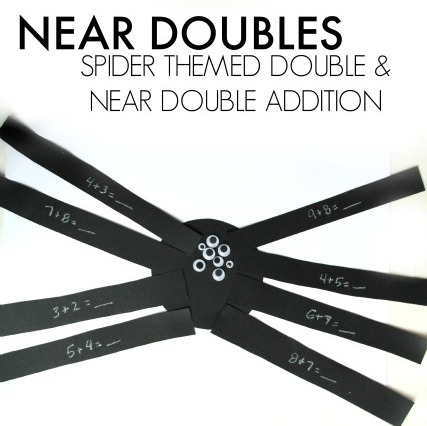
Scarecrow Place Value Activity
This scarecrow math activity is one way to work on place value math, but you could use it to build skills in understanding any addition, subtraction, multiplication, or division skills. Work on fact families, or writing numbers in different forms on each strand of the scarecrow’s hair. The options are pretty limitless! Be sure to check out the scarecrow craft tutorial for this activity.
There are a lot of fine motor skills happening with this Halloween craft, too!
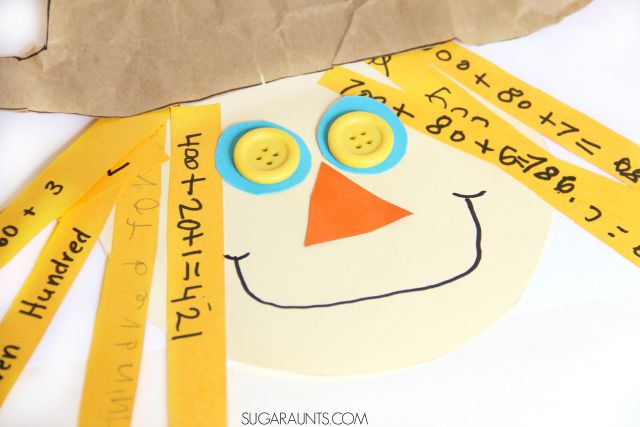
More Halloween Learning Activities
Looking for more fun Halloween math activities? Check out the activities from other bloggers in the list below.
Here are more Halloween learning ideas that build skills, including monster math, candy corn counting, fall math, and more!
Pumpkin Hunt Math– Make a Halloween scavenger hunt that adds visual memory, visual attention, and working memory skills. These are underlying skill areas that can impact math.
Monster Math is a fun math and fine motor activity. I love counting googly eyes to match the number of dots on a monster, especially because neat precision skills are needed to pick up small items like googly eyes in a craft activity.
Candy Corn Literacy Games has some fun Halloween learning ideas, too. I love the candy corn cones that are a great tool for gross motor work like balance, coordination, and other motor planning tasks.
Pumpkin Name Game uses mini pumpkins to work on letter recognition and skills like visual figure ground, visual discrimination, and visual memory. These are great tools to have in your toolbelt when it comes to math and reading.
Candy Corn Math is a fun Halloween math activity that works on visual attention and visual memory skills. Plus, occupational therapy practitioners LOVE using puzzles in OT sessions for all of the visual perceptual skills that impact learning.
Fall Counting Activities involves hands-on one-to-one correspondence with a fine motor math component. There are so many ways to expand this activity to build sensory motor skills needed for writing with a pencil.
Fall Tree Number Matching builds the visual perceptual skills needed for number recognition with a fun Halloween or Fall theme.
fun Halloween math activities
Fun Halloween math activities don’t need to involve a themed worksheet! You can definitely support the underlying skills needed for math, using a pencil to complete math problems, and the visual perceptual skills that impact math skills with learning.
Use manipulatives like:
- pumpkin mini erasers
- pumpkin seeds
- candies
- small Halloween pumpkins to sort and count
- pumpkin or Halloween play dough mats
All of these items can be used to work on fine motor math skills with a fun Halloween theme!

Colleen Beck, OTR/L has been an occupational therapist since 2000, working in school-based, hand therapy, outpatient peds, EI, and SNF. Colleen created The OT Toolbox to inspire therapists, teachers, and parents with easy and fun tools to help children thrive. Read her story about going from an OT making $3/hour (after paying for kids’ childcare) to a full-time OT resource creator for millions of readers. Want to collaborate? Send an email to contact@theottoolbox.com.
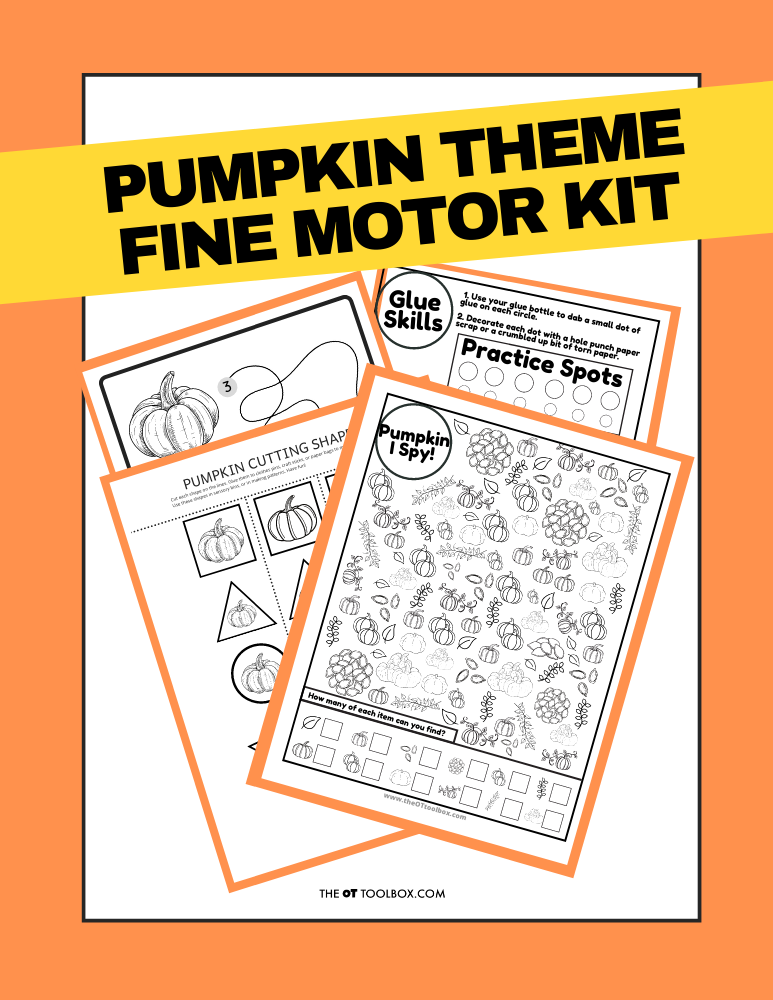

Grab the Pumpkin Fine Motor Kit for more coloring, cutting, and eye-hand coordination activities with a Pumpkin theme! It includes:
- 7 digital products that can be used any time of year- has a “pumpkins” theme
- 5 pumpkin scissor skills cutting strips
- Pumpkin scissor skills shapes- use in sensory bins, math, sorting, pattern activities
- 2 pumpkin visual perception mazes with writing activity
- Pumpkin “I Spy” sheet – color in the outline shapes to build pencil control and fine motor strength
- Pumpkin Lacing cards – print, color, and hole punch to build bilateral coordination skills
- 2 Pumpkin theme handwriting pages – single and double rule bold lined paper for handwriting practice
Work on underlying fine motor and visual motor integration skills so you can help students excel in handwriting, learning, and motor skill development.
You can grab this Pumpkin Fine Motor kit for just $6!



Colleen Beck, OTR/L has been an occupational therapist since 2000, working in school-based, hand therapy, outpatient peds, EI, and SNF. Colleen created The OT Toolbox to inspire therapists, teachers, and parents with easy and fun tools to help children thrive. Read her story about going from an OT making $3/hour (after paying for kids’ childcare) to a full-time OT resource creator for millions of readers. Want to collaborate? Send an email to contact@theottoolbox.com.


